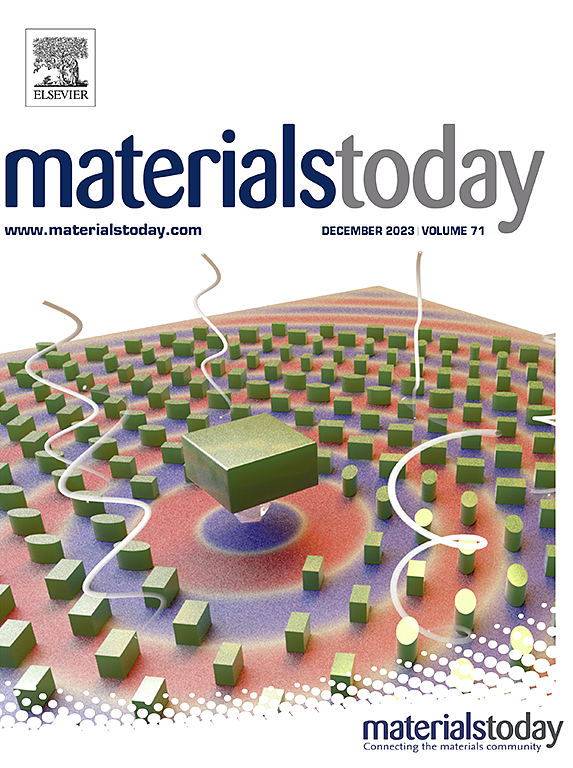Deep-eutectic solvents enable tunable control of the micro-mechanical response through electrical actuation
IF 22
1区 材料科学
Q1 MATERIALS SCIENCE, MULTIDISCIPLINARY
引用次数: 0
Abstract
Active interactions at liquid-to-solid interfaces can significantly impact the mechanical response of solid substrates. Traditionally, these have been regulated through surface-active media, such as ionic liquids, used in a static (time-invariant) manner that relies on chemical tuning to induce specific mechanochemical responses. This study introduces a novel and sustainable class of Deep Eutectic Solvents (DESs) to demonstrate a dynamic (time-variant) mechanochemical effect, achieved through molecular electro-actuation at the fluid-to-solid interface. The dynamic micro-mechanochemical effect was demonstrated using a DES mixture consisting of citric acid and choline chloride in a 1:1 M ratio, applied to a nickel single-crystal micro-cantilever substrate. The findings show how the DES coating alone induced compressive surface stress, resulting in a 34 % increase in principal stress. More notably, when the substrate surface was polarized with a ±5 V potential, electro-actuation amplified this mechanochemical effect by up to 51 %, confirming a clear dynamic response. Further validation was presented at the macroscale in a polycrystalline material setting, where a similar response was observed. These findings give insight into the possible development of smart surfaces coated with DESs, where a single chemical system can dynamically alter materials’ mechanical response through simple electro-actuation, offering versatile applications across micro and macro scales.

深共晶溶剂能够通过电气驱动对微机械响应进行可调控制
液固界面的主动相互作用会显著影响固体基底的力学响应。传统上,这些都是通过表面活性介质来调节的,比如离子液体,以静态(定常)的方式使用,依靠化学调谐来诱导特定的机械化学反应。本研究介绍了一种新型的、可持续的深共晶溶剂(DESs),以展示一种动态的(时变的)机械化学效应,这种效应是通过在流体-固体界面上的分子电致动实现的。使用由柠檬酸和氯化胆碱以1:1的M比组成的DES混合物,将其应用于镍单晶微悬臂基底,证明了动态微观机械化学效应。研究结果表明,DES涂层如何单独引起压缩表面应力,导致主应力增加34%。更值得注意的是,当衬底表面以±5 V电位极化时,电致动将这种机械化学效应放大了51%,证实了明显的动态响应。在多晶材料设置的宏观尺度上提出了进一步的验证,在那里观察到类似的响应。这些发现为DESs涂层智能表面的可能发展提供了见解,其中单个化学系统可以通过简单的电驱动动态改变材料的机械响应,在微观和宏观尺度上提供多功能应用。
本文章由计算机程序翻译,如有差异,请以英文原文为准。
求助全文
约1分钟内获得全文
求助全文
来源期刊

Materials Today
工程技术-材料科学:综合
CiteScore
36.30
自引率
1.20%
发文量
237
审稿时长
23 days
期刊介绍:
Materials Today is the leading journal in the Materials Today family, focusing on the latest and most impactful work in the materials science community. With a reputation for excellence in news and reviews, the journal has now expanded its coverage to include original research and aims to be at the forefront of the field.
We welcome comprehensive articles, short communications, and review articles from established leaders in the rapidly evolving fields of materials science and related disciplines. We strive to provide authors with rigorous peer review, fast publication, and maximum exposure for their work. While we only accept the most significant manuscripts, our speedy evaluation process ensures that there are no unnecessary publication delays.
 求助内容:
求助内容: 应助结果提醒方式:
应助结果提醒方式:


